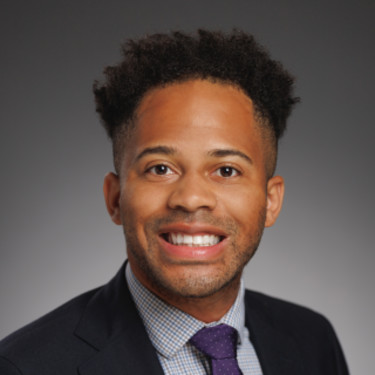Amid recent years of economic volatility and stagnating pay, financial planning has become increasingly relevant for physicians and other medical professionals looking toward retirement. Among a wide range of options to that end, most clinicians (69%) plan to rely on tax-advantaged accounts such as a 401(k) and other stock investments as their main source of retirement income, according to a Doximity poll.
This compares with only 14% who plan to use mainly benefit plans like a pension or Social Security; 13% a side gig or part-time business; and 4% other sources such as cryptocurrency or cash.
The clear preference for stock investments may reflect their inherent advantages — from the tax breaks and matching employer contributions of traditional retirement accounts to the relative ease of tracking and managing index funds or exchange-traded funds.
Still, even though many clinicians are well aware of the importance of investing, “there is a huge percentage who do not financially plan for retirement,” Jordan Frey, MD, told Doximity. Dr. Frey, who offers financial advice to physicians under the moniker the Prudent Plastic Surgeon, described the general lack of financial education and planning as a blindspot for many clinicians.
“There is a deeply rooted taboo in medicine that doctors should not think about money, that this somehow interferes with our duty to patient care,” he said. “However, optimal patient care and clinician financial well-being are not mutually exclusive; in fact, they are synergistic.”
Sources of Retirement Income
The poll results include the responses of 3,654 clinicians, including physicians, NPs, PAs, and pharmacists across a wide range of medical specialties.
Among these professions, physicians are the most likely to lean on stock investments as their main source of retirement income. Nearly three-fourths of physicians plan to do so, whereas slightly more than half of NPs say they will. In contrast, a higher percentage of NPs (24%), pharmacists (18%), and PAs (16%) will use a pension or Social Security as their main source of retirement income, compared with physicians (11%).
This preference for stock investments also tends to be higher among younger versus older clinicians. Roughly three-fourths of clinicians in their 20s, 30s, and 40s plan to fund their retirement primarily with stock investments, whereas the percentage falls to 63%-65% for those in their 60s and to 55% for those in their 70s.
Many older clinicians, instead, plan to source funds mainly from a pension or Social Security, including 20% of those in their 60s and 30% of those in their 70s.
Clinicians’ transition away from pensions and toward other investment accounts follows the general trend across most industries in the U.S. Since at least the 1980s, employers have been offering fewer defined benefits plans, like pensions, in favor of contribution plans, like a 401(k) — transferring much of the responsibility for retirement planning to their employees.
“This [shift toward contribution plans] is not necessarily a negative, however, as defined contribution plans give employed clinicians the ability to control their investments,” Dr. Frey said. They would do this by “ideally using a passive investing strategy that outperforms active strategies typically utilized by pension funds.”
The shift may also reflect how clinicians’ increased access to capital is changing their preferences for retirement income.
For example, 76% of surgical clinicians — who tend to have higher average salaries than other clinicians — plan to use stock investments as their main source of retirement income, compared with 72% of non-surgical specialists and 62% of those in primary care. Conversely, 21% of clinicians in primary care versus 9% in surgery plan to use pensions or Social Security as their primary source of retirement income.
From Real Estate to Crypto
Though the majority of clinicians plan to rely mainly on stock investments in retirement, most are likely to draw from a variety of other income sources as well.
Anesthesiologist Mary Roper, MD, suggested that clinicians “start by finding some tax-advantaged investments so that you are playing with house money … [and then consider] diversified investments, including real estate, mineral royalties, private equity, gold/silver, and yes, crypto.”
William Green, MD, a retired psychiatrist who practiced for 39 years, said he has been pulling from a “mix of a pension from employment as a professor at a state medical school and taxable investments, as well as drawing from both a Roth IRA and a regular IRA.”
In addition to these investments, at least 13% of clinicians plan to continue earning income through side gigs after they retire. These ancillary jobs have become increasingly common among clinicians, who are especially drawn to real estate investing and locum tenens work to help supplement their retirement income.
“I prefer the idea of always working part time … to avoid outliving investments,” Rebecca Evans, PA-C said. “But otherwise, I’ll live on tax-advantaged accounts.”
And still others, like James Decker, MD, plan to continue working beyond the typical retirement age, not just for the income but because of their dedication to the field.
“I will work until I am incapable of work,” said Dr. Decker, who is a practicing psychiatrist in Arizona. “My work is my calling in life, and unless I find a higher calling, I’ll go straight from working to the grave.”
Simple But Not Always Easy
Beyond simply managing money, financial planning for retirement can help address widespread concerns over clinician burnout and overwork.
“Improved financial well-being is associated with better overall clinician well-being and improved patient care,” Dr. Frey said. “And so it is so important for clinicians to plan for retirement.”
Some of the most common mistakes Dr. Frey has seen physicians and other medical professionals make involve not saving enough money early in their career, not writing out a specific financial plan, failing to understand all of the expenses they will have to cover in retirement, and overspending on fees and taxes from their investments.
To address these potential issues, he suggested that clinicians create a budget, spend intentionally, explore passive investment strategies, and use a retirement calculator to determine how much they need to save each year to reach their desired nest egg.
“Successful retirement planning and reaching financial freedom as a clinician is simple, but not necessarily easy,” Dr. Frey said. “But by planning ahead, medical professionals can control their time; work because they want to, not because they have to; and retire comfortably on their terms.”
What's your source of retirement income going to be? Share in the comments!
Illustration by Jennifer Bogartz







